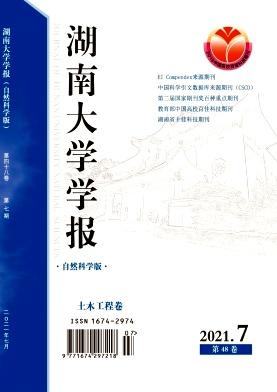Economic Valuation of Mangrove Ecosystem Services in Sembilang National Park of South Sumatra, Indonesia
引用次数: 2
Abstract
An ecosystem services valuation could provide significant improvements for the policy maker to monitor the mangrove ecosystem changes in coastal ecosystems. Therefore, this study aimed to measure the value of ecosystem service in Sembilang National Park (NSP), Banyuasin District, South Sumatra, Indonesia. Data collection used questionnaires and in-depth interviews with the target respondents being fishermen, farmers, and stakeholders who live in the mangrove ecosystem area. The total economic value (TEV) was used as an approach for calculating the various values of the mangrove services. Several methods have been developed to estimate the ecosystem services value. In this study, the market price method, benefits transfer method, replacement method, and travel cost method were applied to estimate the benefit value for provisioning, regulating, supporting, and cultural services. The result showed that the TEV of mangrove ecosystem services with an area of 88,556 ha was IDR 6,961,126,186,194 year-1 (US$ 467,974,555.06 year-1) or IDR 78,607,444 ha-1year-1 (US$ 5,284.5 ha-1year-1). The annual benefit values for provisioning, regulating, supporting, and cultural services were IDR 267,301,712,200, IDR 6,401,520,094,447, IDR 292,120,962,048, and IDR 183,417,500, respectively. The benefit value of regulating services (coastline protection and carbon sequestration) dominated the TEV of mangrove ecosystems in the SNP. To avoid the lost value of these mangrove services, conservation and restoration should receive a high priority in mangrove management and planning in the future. These research results could be used as baseline data for local governments in managing mangrove ecosystems through the establishment of a mangrove working group in South Sumatra Province. Therefore, the novelty of this research resided in the first economic valuation in the SNP using the TEV approach, as illustrated.印尼南苏门答腊岛森比朗国家公园红树林生态系统服务的经济价值
生态系统服务评估可以为决策者监测沿海生态系统中红树林生态系统的变化提供重大改进。因此,本研究旨在衡量印度尼西亚南苏门答腊Banyuasin区Sembilang国家公园的生态系统服务价值。数据收集采用了问卷调查和深入访谈的方式,对象是红树林生态系统区域的渔民、农民和利益相关者。总经济价值(TEV)被用作计算红树林服务的各种价值的方法。已经开发了几种方法来估计生态系统服务价值。在本研究中,应用市场价格法、利益转移法、重置法和差旅成本法来估计供应、监管、支持和文化服务的利益价值。结果表明,面积为88556公顷的红树林生态系统服务的TEV为6961126186194印尼盾(467974555.06美元)或7860744印尼盾(5284.5美元)。供应、监管、支持和文化服务的年度福利价值分别为267301712200印尼盾、6401520094447印尼盾、292120962048印尼盾和183417500印尼盾。调节服务(海岸线保护和碳固存)的效益价值主导了苏格兰民族党红树林生态系统的TEV。为了避免这些红树林服务的价值损失,保护和恢复应在未来的红树林管理和规划中得到高度重视。通过在南苏门答腊省成立红树林工作组,这些研究结果可作为地方政府管理红树林生态系统的基线数据。因此,如图所示,这项研究的新颖性在于首次使用TEV方法对苏格兰民族党进行经济评估。
本文章由计算机程序翻译,如有差异,请以英文原文为准。
求助全文
约1分钟内获得全文
求助全文

 求助内容:
求助内容: 应助结果提醒方式:
应助结果提醒方式:


